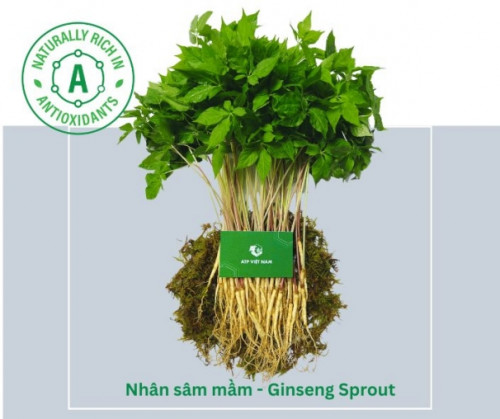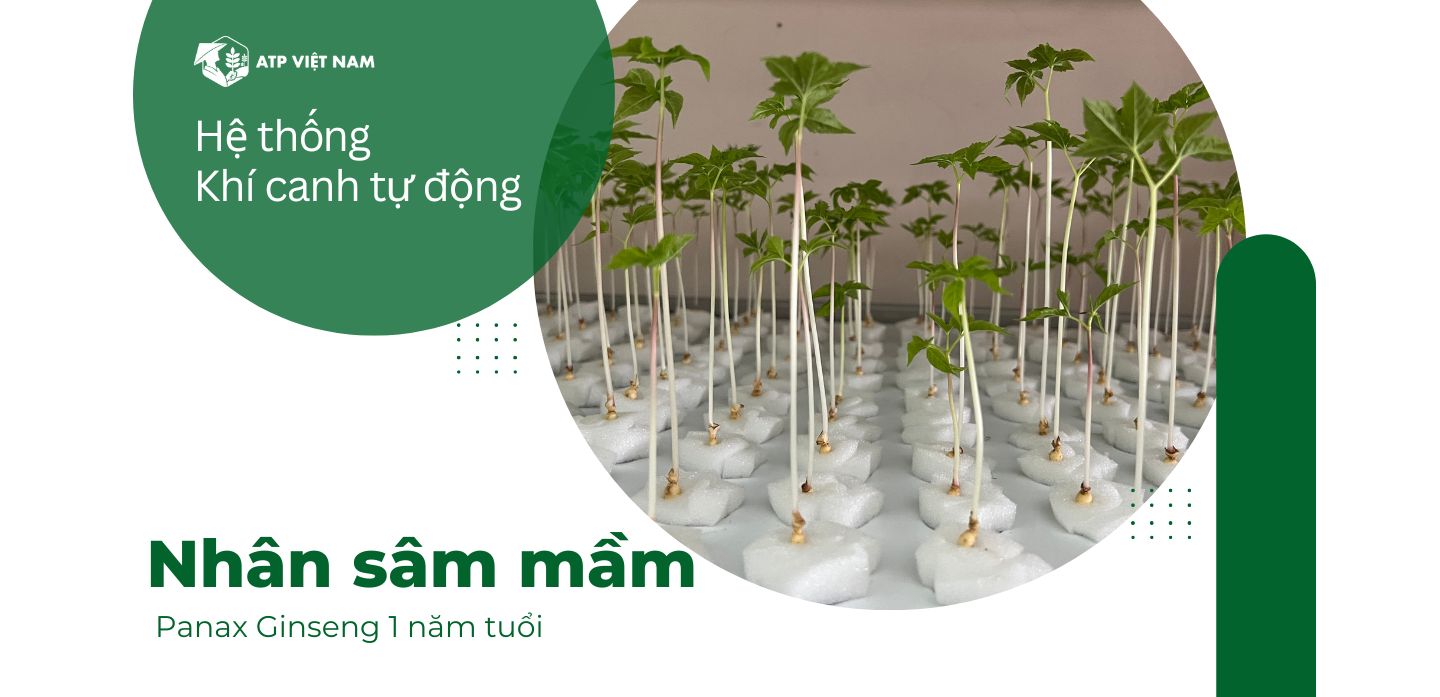Description and taste
Ginseng sprouts are thin and slender roots, averaging 5 to 10 cm long. The roots are elongated, straight and cylindrical, tapering to a pointed and flexible end, often curled. The leather ranges in color from ivory, beige, to golden brown and has a rough texture, and is covered with nicks and scratches. Beneath the skin, the narrow flesh is firm, tender, and crisp with a delicate, snap-like consistency. Ginseng sprouts are sold with succulent light green stems and dark green leaves still intact, intentionally left as a flavor and texture enhancer. The leaves are oval to pointed with serrated edges and each leaf can be 1 to 3 cm long. Ginseng sprouts have an earthy aroma and taste, sweet and bitter with licorice. The whole young plant should be consumed whole and the leaves will have a stronger flavor while the roots will be more tender.
Source
Panax ginseng, scientifically known as Panax ginseng, is the root and young leaves of the Asian ginseng plant, belonging to the family Araliaceae. Asian ginseng has been cultivated medicinally for thousands of years and is harvested for its nutritious fleshy leaves and roots. There are two different types of Ginseng grown worldwide, Asian Ginseng, Panax Ginseng and American Ginseng, Panax quinquefolius. The most common ginseng for sprout production is Asian Ginseng, and this plant has been used in natural medicines for thousands of years. The name Ginseng is derived from the Chinese word renshen, "ren" meaning "person" and "shen" meaning "root". This description is given to this plant in honor of its resemblance to the human body when the roots are fully developed, creating branches that look like arms and legs. The root's similarity to the human body also deeply connects it to natural medicines, with many practitioners believing the roots capture the essence of man and the earth. In modern times, Ginseng is difficult to find in the wild because the plant grows slowly, takes years to mature, and the wild plant has been over-harvested due to the need for medicine. Scientists have developed a hydroponic system for growing Ginseng sprouts to quickly produce small, soft roots that contain many of the same nutritional properties as mature plants. Ginseng sprouts have become a modern solution to making Ginseng for commercial purposes, the roots and leaves can be used in a variety of culinary preparations.
Nutritional value
Ginseng sprouts are an excellent source of vitamin C to boost the immune system and contain other nutrients, including amino acids, B vitamins, and folic acid. Sprouts also provide concentrated amounts of saponins triterpenoid glycosides, sometimes called ginsenosides, which are compounds that protect the body against bacteria and viruses and maintain a healthy blood stream . In traditional Chinese medicine, Ginseng is considered a natural medicine to boost energy, protect the immune system, and reduce environmental stress on the body.
Applications in Culinary
Ginseng sprouts have a sweet, nutty and slightly bitter taste that is suitable for fresh and cooked processing. Sprouts are grown to be eaten whole, including the roots, stems, and leaves. Ginseng sprouts can be used whole as a garnish on sushi, wrapped into fresh spring rolls, sliced into a green salad, or chopped into kimchi. Sprouts can also be added to soups, stir-fries, porridge or mixed into rice and noodle dishes. In Korea, ginseng sprouts can be used as a substitute for mature roots in samgyetang, a ginseng-flavored chicken soup. In addition to fresh preparations, Ginseng sprouts can be lightly steamed and served with main and side dishes or steeped in tea. The leaves are also used in salads, garnishes for drinks, or mixed into smoothies. Ginseng sprouts combine well with spices such as cloves, cinnamon, five spices, curry powder, ginger, hazelnuts, cucumbers, cabbage, aromatic substances including chili, garlic and onions, barley jasmine, Thai basil, rosemary and fruits such as goji berries, longans, jujubes, nuts, strawberries and pineapples. Whole, unwashed ginseng should be consumed immediately for best quality and flavor and will keep for several days in the refrigerator compartment.
How to grow ginseng sprouts in Korea
Ginseng sprouts are being grown in specially designed greenhouses in Korea for optimum efficiency. Prior to the creation of hydroponic sprouts, mature Ginseng grown for commercial use traditionally took 1 to 6 years to develop. This slow-growing nature failed to meet the growing demand for roots, prompting scientists to develop short-term farming methods to create a suitable type of Ginseng as a dietary supplement. Hydroponically grown Ginseng Sprouts take only 1 to 2 months to reach a harvestable state and research has shown that slender sprouts contain many of the same nutrients as mature Ginseng.
https://specialtyproducte.com/producte/Ginseng_Sprouts_17381.php#:~:text=Ginseng sprouts are an excellent,B vitamins, and folic acid.
 08/08/2023
Công dụng chống oxy hóa, chống viêm và chống huyết khối của…
08/08/2023
Công dụng chống oxy hóa, chống viêm và chống huyết khối của…









